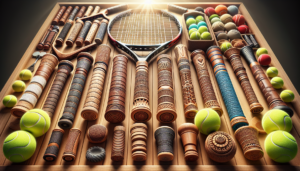Introduction to Grand Slam Tournaments
Grand Slam tournaments are the most prestigious events in the world of tennis. These tournaments consist of the Australian Open, Roland Garros (French Open), Wimbledon, and the US Open. Each tournament has a rich history and unique characteristics that set them apart from one another.
The term “Grand Slam” was first used in 1933 when Jack Crawford won the Australian Championships, French Championships, and Wimbledon, only falling short at the US Championships. Since then, the four tournaments have become the pinnacle of achievement for professional tennis players around the globe.
What are Grand Slam Tournaments?
Grand Slam tournaments are the four most important annual tennis events. They offer the highest ranking points, prize money, and prestige compared to any other tournament in the tennis calendar. Winning a Grand Slam is considered a major milestone in a player’s career, and holding all four titles in the same year is known as a “Calendar Grand Slam,” a rare feat achieved by only a handful of players in history.
Each Grand Slam tournament is played over a two-week period, featuring five main events: men’s singles, women’s singles, men’s doubles, women’s doubles, and mixed doubles. The tournaments follow a knockout format, with the winner of each match progressing to the next round until the finals.
Importance and Prestige of Grand Slam Tournaments
Grand Slam tournaments hold a special place in the hearts of tennis players and fans alike. Winning a Grand Slam title is considered the ultimate achievement in tennis, as it requires a combination of skill, endurance, and mental fortitude. Players who have won multiple Grand Slam titles are often regarded as legends of the sport.
In addition to the prestige associated with winning a Grand Slam, these tournaments also offer significant ranking points and prize money. A player’s performance in Grand Slams heavily influences their world ranking, which determines their seeding in future tournaments and Olympic eligibility. Moreover, the prize money awarded at Grand Slams is substantially higher than at other tournaments, with the total prize pool exceeding $50 million at each event.
The Australian Open
History and Significance
The Australian Open is the first Grand Slam tournament of the year, held annually in Melbourne, Australia, during the last fortnight of January. The tournament was first held in 1905 and has been played on various surfaces over the years, including grass and clay. Since 1988, the Australian Open has been played on hardcourts at Melbourne Park.
The Australian Open is known for its lively atmosphere and often extreme heat, which can reach up to 45°C (113°F). To combat the heat, the tournament introduced the “Heat Stress Scale” in 2019, which takes into account air temperature, radiant heat, humidity, and wind speed to determine whether play should be suspended.
Notable Players and Records
The Australian Open has been graced by many legendary players throughout its history. In the men’s singles, Novak Djokovic holds the record for the most titles, with nine victories. Other notable male players include Roger Federer and Roy Emerson, with six titles each.
In the women’s singles, Margaret Court holds the all-time record with 11 Australian Open titles. Serena Williams has won the tournament seven times, while Steffi Graf and Monica Seles have each won four titles.
Key Venues: Rod Laver Arena
The main venue for the Australian Open is the Rod Laver Arena, named after the legendary Australian tennis player Rod Laver. The arena has a seating capacity of 14,820 and features a retractable roof, which can be closed in case of extreme heat or rain.
The Rod Laver Arena has hosted many memorable matches over the years, including the epic 2012 men’s singles final between Novak Djokovic and Rafael Nadal, which lasted a record 5 hours and 53 minutes. The arena’s retractable roof allows for uninterrupted play, ensuring that fans can enjoy the action regardless of the weather conditions.
Roland Garros (French Open)
History and Significance
Roland Garros, also known as the French Open, is the second Grand Slam tournament of the year, held in Paris, France, during late May and early June. The tournament was first held in 1891 and has been played on the iconic red clay courts since 1928.
The French Open is widely regarded as the most physically demanding of the Grand Slam tournaments due to the slow playing surface and the best-of-five-set format in the men’s singles event. The red clay courts slow down the ball and create higher bounces, which favors players with strong defensive skills and excellent endurance.
Notable Players and Records
Throughout its history, the French Open has been dominated by a select group of players who have mastered the art of clay-court tennis. In the men’s singles, Rafael Nadal holds the record for the most titles, with an astonishing 13 victories. Other notable male players include Björn Borg, who won six titles, and Mats Wilander, with three titles.
In the women’s singles, Chris Evert holds the record for the most French Open titles, with seven victories. Other notable female players include Steffi Graf, who won six titles, and Margaret Court, with five titles.
Key Venues: Philippe Chatrier Court
The main venue for the French Open is the Philippe Chatrier Court, named after the former president of the French Tennis Federation. The court has a seating capacity of 15,225 and features a retractable roof, which was added in 2020 to allow for play during inclement weather.
The Philippe Chatrier Court has hosted many memorable matches over the years, including the 2004 men’s singles final between Gaston Gaudio and Guillermo Coria, which lasted 3 hours and 31 minutes. The court’s unique red clay surface and passionate French crowd create an unforgettable atmosphere for players and fans alike.
Wimbledon
History and Significance
Wimbledon, also known as The Championships, is the oldest and most prestigious tennis tournament in the world. It is the third Grand Slam tournament of the year, held in London, England, during late June and early July. The tournament was first held in 1877 and has been played on grass courts since its inception.
Wimbledon is steeped in tradition, from the strict all-white dress code for players to the consumption of strawberries and cream by spectators. The tournament is also known for its royal patronage, with members of the British Royal Family often in attendance.
Notable Players and Records
Wimbledon has witnessed some of the greatest players in the history of tennis. In the men’s singles, Roger Federer holds the record for the most titles, with eight victories. Other notable male players include Pete Sampras, who won seven titles, and Novak Djokovic, with five titles.
In the women’s singles, Martina Navratilova holds the record for the most Wimbledon titles, with nine victories. Other notable female players include Steffi Graf, who won seven titles, and Serena Williams, with seven titles.
Key Venues: Centre Court
The main venue for Wimbledon is the iconic Centre Court, which has a seating capacity of 14,979. The court features a retractable roof, which was added in 2009 to allow for play during rain delays.
Centre Court has hosted many historic matches over the years, including the epic 2008 men’s singles final between Roger Federer and Rafael Nadal, which is widely regarded as one of the greatest matches of all time. The court’s pristine grass surface and the tournament’s strict adherence to tradition make Wimbledon a unique and cherished event in the world of tennis.
US Open
History and Significance
The US Open is the fourth and final Grand Slam tournament of the year, held in New York City, USA, during late August and early September. The tournament was first held in 1881 and has been played on various surfaces over the years, including grass and clay. Since 1978, the US Open has been played on hardcourts at the USTA Billie Jean King National Tennis Center.
The US Open is known for its fast-paced, high-energy atmosphere, with matches often extending late into the night. The tournament is also notable for being the first Grand Slam to introduce equal prize money for men and women in 1973.
Notable Players and Records
The US Open has been won by many of the greatest players in tennis history. In the men’s singles, Roger Federer, Pete Sampras, and Jimmy Connors hold the joint record for the most titles, with five victories each. Other notable male players include John McEnroe and Rafael Nadal, with four titles each.
In the women’s singles, Chris Evert and Serena Williams hold the record for the most US Open titles, with six victories each. Other notable female players include Steffi Graf, who won five titles, and Martina Navratilova, with four titles.
Key Venues: Arthur Ashe Stadium
The main venue for the US Open is Arthur Ashe Stadium, named after the legendary American tennis player and activist Arthur Ashe. The stadium has a seating capacity of 23,771, making it the largest tennis stadium in the world. It also features a retractable roof, which was added in 2016 to allow for uninterrupted play during inclement weather.
Arthur Ashe Stadium has hosted many memorable matches over the years, including the 2001 men’s singles final between Pete Sampras and Andre Agassi, which was the latest-finishing match in US Open history, ending at 11:07 pm. The stadium’s electric atmosphere and passionate New York crowd make the US Open a thrilling experience for players and fans alike.
Notable Players in Grand Slam History
Margaret Court
Margaret Court is an Australian former professional tennis player who achieved an unprecedented 64 Grand Slam titles across singles, doubles, and mixed doubles competitions. She holds the record for the most Grand Slam singles titles, with 24 victories, including a record 11 Australian Open titles.
Court’s dominance in the sport spanned from the 1960s to the early 1970s, during which she became the first woman to complete a “boxed set” of Grand Slam titles, winning all four tournaments in singles, doubles, and mixed doubles. Her remarkable achievements have cemented her status as one of the greatest players in tennis history.
Roger Federer
Roger Federer, a Swiss professional tennis player, is widely regarded as one of the greatest players of all time. He has won a record-breaking 20 Grand Slam men’s singles titles, including a record eight Wimbledon titles. Federer’s success is attributed to his versatile playing style, which combines exceptional footwork, precise shot-making, and a powerful serve.
Federer’s longevity and consistency at the top of the game are unparalleled. He has spent a record total of 310 weeks as the world No. 1 player and has finished as the year-end No. 1 five times. His rivalry with Rafael Nadal and Novak Djokovic has produced some of the most memorable matches in tennis history.
Rafael Nadal
Rafael Nadal, a Spanish professional tennis player, is often referred to as the “King of Clay” due to his dominance on the surface. He has won a record 13 French Open titles and a total of 20 Grand Slam men’s singles titles, tying Roger Federer’s record.
Nadal’s playing style is characterized by his powerful topspin groundstrokes, incredible court coverage, and mental toughness. He has consistently challenged Federer and Djokovic for the top spot in the rankings, and their rivalry has become one of the most iconic in sports history.
Novak Djokovic
Novak Djokovic, a Serbian professional tennis player, has won 18 Grand Slam men’s singles titles, including a record nine Australian Open titles. He is known for his exceptional return of serve, court coverage, and mental resilience.
Djokovic has had a meteoric rise to the top of the game, becoming the first male player to win all nine Masters 1000 tournaments and leading Serbia to its first Davis Cup title in 2010. His rivalry with Federer and Nadal has driven him to consistently improve his game and has resulted in numerous epic matches.
Tennis Organizations and Development Programs
International Tennis Federation (ITF)
The International Tennis Federation (ITF) is the governing body of tennis worldwide. It oversees the Grand Slam tournaments and is responsible for maintaining and enforcing the rules of the game. The ITF also organizes various international tournaments, including the Davis Cup and Fed Cup, and supports the development of tennis at the grassroots level.
The ITF works closely with regional and national tennis associations to promote the growth of the sport and ensure a consistent application of rules and standards across all levels of play.
Grand Slam Player Development Programme
The Grand Slam Player Development Programme (GSPDP) is a joint initiative of the ITF and the four Grand Slam tournaments. The program aims to support the development of young talented players from around the world, particularly those from nations with limited tennis infrastructure and resources.
Since its inception in 1986, the GSPDP has contributed over $56 million to support tennis development globally. The program offers funding, coaching support, and competitive opportunities to help young players reach their full potential and compete at the highest levels of the sport.
National Tennis Associations
National tennis associations play a crucial role in the development and promotion of tennis within their respective countries. These organizations work in collaboration with the ITF to govern and support tennis at the national level.
Some prominent national tennis associations include:
- Tennis Australia: Responsible for organizing the Australian Open and supporting the growth of tennis in Australia.
- French Federation of Tennis (FFT): Oversees the French Open and promotes tennis development in France.
- United States Tennis Association (USTA): Organizes the US Open and supports tennis at all levels in the United States.
These associations play a vital role in nurturing young talent, organizing national tournaments, and supporting the development of tennis infrastructure within their countries.






